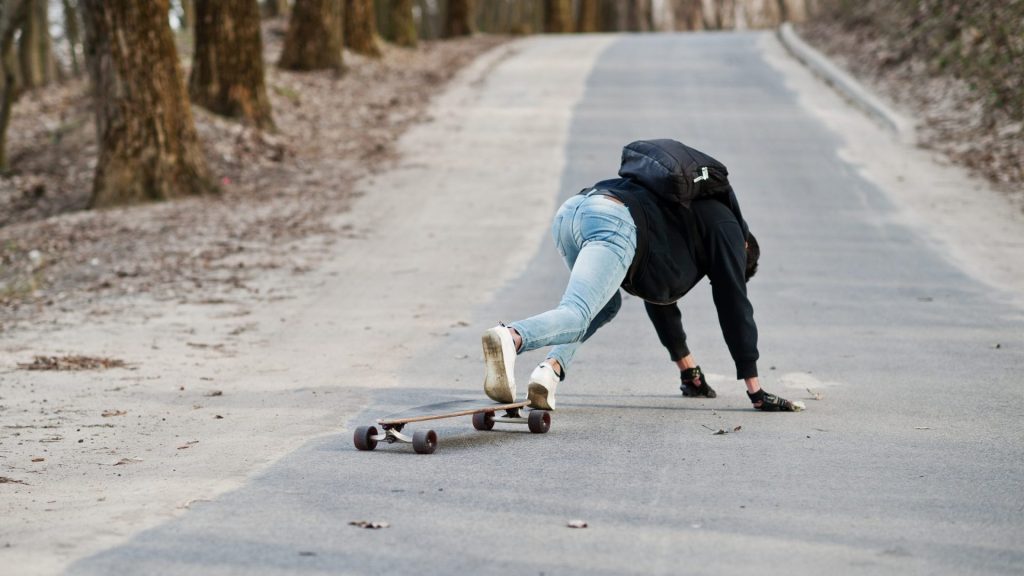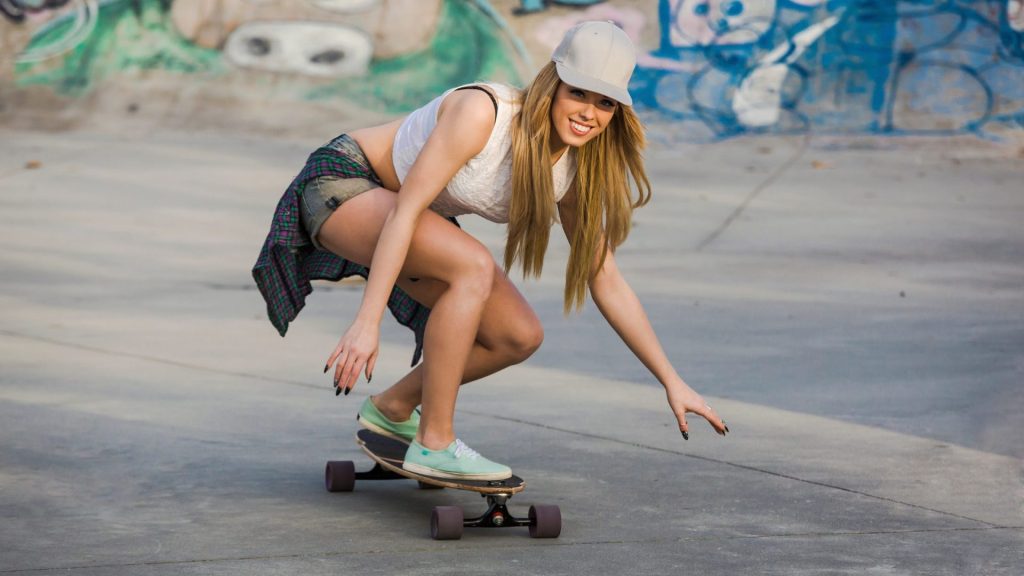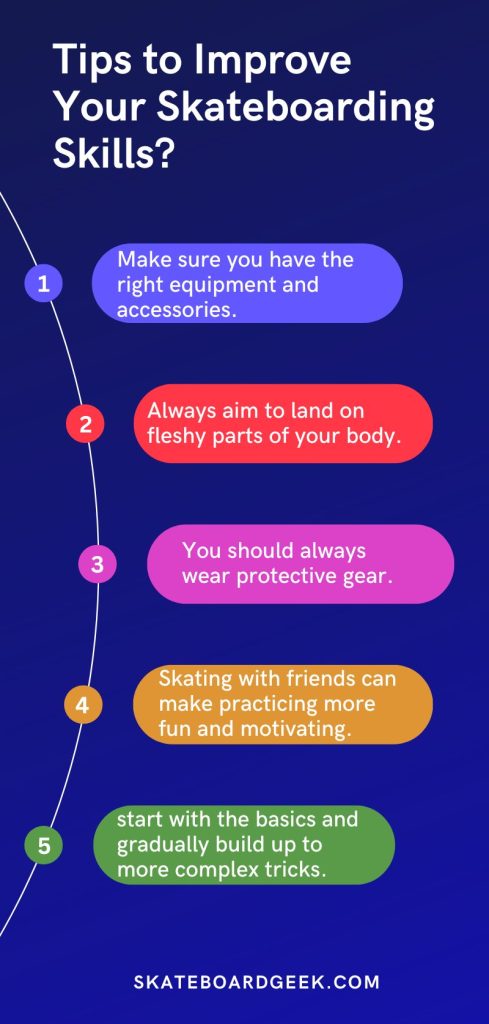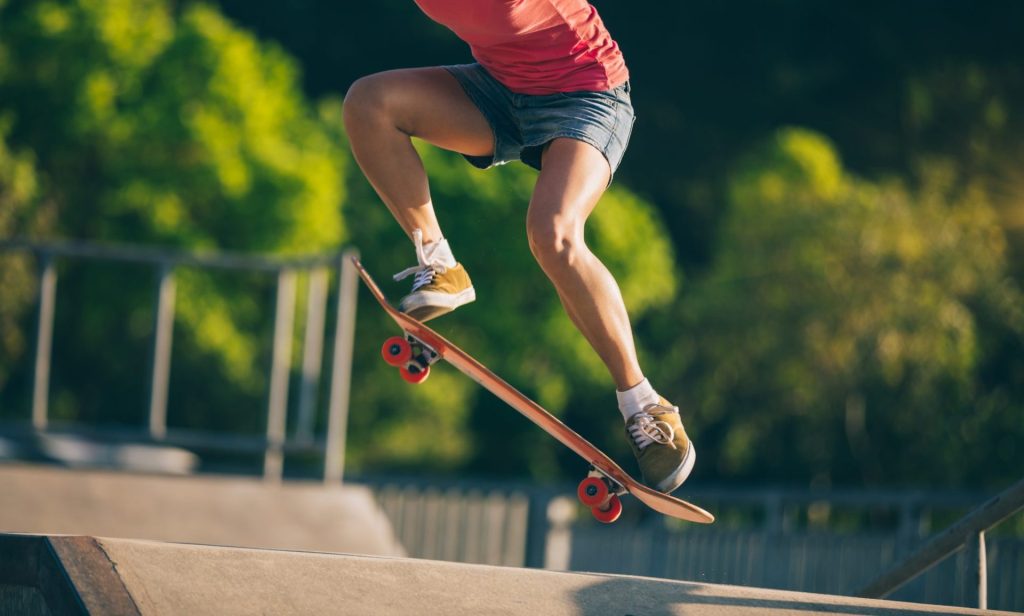Skateboarding is known for being a challenging sport, even for those who have been doing it for years. But that doesn’t mean you should give up on it just yet. With the right mindset, dedication, and practice, you can become a skilled skateboarder. Before learning tips and tricks to improve it, let’s understand why is skateboarding so hard!
Well, for starters, it’s not exactly easy to balance on a small piece of board with wheels while trying to avoid slamming into the pavement. It takes some serious coordination and skill to pull off even the most basic tricks.
Additionally, skateboarding can be unforgiving, as falling often means slamming into hard surfaces like concrete or asphalt. That fear of injury can make it tough to stay motivated and keep practicing.
Follow these safety tips before stepping onto a skateboard!
Now, let’s dig deep and understand the reasons why skateboarding is considered a difficult sport.
Read how to get over the fear of skateboarding.
Contents
Why is Skateboarding So Hard to Learn?
It’s true that skateboarding has captured the hearts of millions of people worldwide for being exhilarating, exciting, and a great way to express oneself creatively.
However, anyone who has ever tried skateboarding knows that it is not an easy sport to master. It can be frustrating, painful, and even downright terrifying at times.
Here are some of the main reasons why skateboarding is such a tough nut to crack.
a. Dexterity, Coordination, and Persistence
Skateboarding requires a high degree of dexterity and coordination, which can take months and years to develop. To pull off even the most basic tricks, skaters need to have precise control over their board, body, and balance.
The smallest misstep can result in a wipeout, so it takes persistence and dedication to keep practicing until you get it right.
b. Unforgiving Nature of the Sport
Keep in mind that skateboarding is an unforgiving sport, and every fall can result in injury. Whether it’s a scraped knee or a broken bone, the consequences of a fall can be severe.
Additionally, skaters need to be able to take criticism and feedback without getting discouraged. It can be disheartening to spend hours trying to master a trick, only to have someone tell you that you are doing it wrong.
c. Steep Learning Curve
The hardest part of skateboarding is persistency, it has a steep learning curve, which can be frustrating for beginners. Unlike other sports where you can see progress quickly, skateboarding often requires months or even years of practice before you can master a single trick.
This can be discouraging for new skaters, but why give up? Remember that everyone starts somewhere.
Read a detailed guide on how to skateboard for beginners.
d. Fitness, Age, and Mental Factors
Skateboarding requires a combination of strength, flexibility, and endurance. If you are not in good physical shape, it can be difficult to keep up with the demands of the sport.
Also, age can play a role in skating ability. Younger skaters tend to have more flexibility and energy, while older skaters may struggle with the physical demands of the sport.
Mental factors like fear and self-doubt can also play a role in skateboarding ability. Skaters need to have a strong mindset to overcome fear, visualize their tricks, and maintain focus while performing to avoid mistakes and prevent injury.
How Long Does It Take to Become Good at Skateboarding?
Are you thinking – “how much blood, sweat, and tears do I have to sacrifice before I can impress my friends with sick tricks?” Well, it depends on the following factors:
- Your natural abilities
- Dedication
- Practice routine
In short, with consistent effort and a willingness to learn, you can become a proficient skateboarder in a few months to a year. That means you’ll be able to confidently cruise around and perform basic tricks. However, you may strive for more advanced tricks and competition-level skills.
Just starting out with skateboarding? Read how to push on a skateboard without falling.
a. Expected Beginner Progression
As a beginner, you’ll start by learning basic skills, such as balancing on the board, pushing, and turning.
These skills may take a few weeks to a few months to master, depending on your practice frequency and consistency. After that, you can move on to learning tricks, such as Ollies and kickflips.
It’s important to note that progress may vary from person to person, so don’t compare yourself to others and focus on your own progress.
b. Timeline for Learning Basic Skills and Tricks
Learning basic skills and tricks can take anywhere from a few months to a year or more, depending on how often you practice and how quickly you pick up new skills.
Remember to have patience and persistence during this process, as learning new skills takes time and practice.
c. Importance of Dedication and Motivation
The key to becoming good at skateboarding is dedication and motivation. You should aim to practice regularly, preferably every day, even if it’s just for a few minutes.
Set goals for yourself and work towards achieving them, whether it’s learning a new trick or perfecting an existing one.
Always have fun and enjoy the process, and don’t give up even if you hit a roadblock. With the right mindset and approach, you can become a skilled skateboarder in no time.
How to Improve Your Skateboarding Skills?
Do you feel like you are stuck in a rut with your skateboarding skills? Whether you are a beginner or an experienced skateboarder, there’s always room for improvement.
Let me explain some tips and tricks on how to take your skateboarding skills to the next level. From mastering basic techniques to learning advanced tricks, we’ve got you covered.
1. Equipment and Accessories
- Make sure you have the right equipment and accessories that fit your body size and skill level.
- Good quality skateboard, appropriate sized wheels, bearings, trucks, and grip tape can make a big difference in the quality of your ride.
2. Learning how to fall
- Falling is an inevitable part of skateboarding, but learning how to fall can help you avoid injuries.
- Always aim to land on fleshy parts of your body, like your buttocks, and never land with your arms straight out in front of you.
3. Protective Equipment
- Protective gear is essential when learning how to skate. You should always wear a helmet, knee pads, elbow pads, and wrist guards.
- Along with preventing you from serious injuries, they also make you look cool.
4. Practicing often
- The more you practice, the better you get. Try to practice consistently and challenge yourself to learn new tricks.
5. Skating with friends
- Skating with friends can make practicing more fun and motivating.
- It can also help you learn from others and get tips on how to improve your skills.
6. Importance of slowly building up tricks
- It’s important to start with the basics and gradually build up to more complex tricks.
- Don’t rush it and take the time to perfect each trick before moving on to the next one.
What is the Hardest Thing about Skateboarding?
The hardest thing in skateboarding is mastering the art of persistency. Yep, you read that right. It’s not about landing the fanciest trick or pulling off a crazy stunt. It’s about the mental game and having the grit to keep going even when you are face-planting left and right.
You see, skateboarding is a sport that requires a lot of trial and error. Definitely, you are going to fall, and sometimes it is going to be hard enough to end up in a hospital. But the key is to get back up and keep trying. It’s all about pushing yourself out of your comfort zone and being willing to fail over and over again until you finally succeed.
And let me tell you, it’s not easy. It takes a lot of mental strength and determination to keep going, but that’s what makes skateboarding such a rewarding sport.
Read about the hardest tricks in skateboarding ranked by difficulty.
Examples of Difficult Tricks
Skateboarding is all about pushing your limits and trying new things.
Here are some examples of difficult tricks that even experienced skaters struggle with:
- Kickflip: A trick where the skater flips the board 360 degrees in the air while jumping.
- 50-50 Grind: A trick where the skater grinds on a rail or ledge with both trucks.
- Ollie 180: A trick where the skater pops the board into the air and turns 180 degrees before landing.
- Tre Flip: A trick where the skater flips the board 360 degrees while also doing a kickflip.
How to Perform 50-50 Grind
Reasons Why Skateboarding Can Be Tricky
Skateboarding can be tricky, but that’s what makes it so thrilling!
Here are some of the main reasons why:
Working with your upper and lower body: Skateboarding is unique in that it requires both your upper and lower body to work in unison. You have to use your legs to push and control the board while using your arms to maintain balance and perform tricks.
Skateboarding is a great form of exercise too.
Balance is essential: Balance is crucial in skateboarding. Whether you are rolling down the street or trying to land a trick, maintaining proper balance is key to staying on your board and avoiding spills.
Sufficient driving force: To make the board move, you need a sufficient driving force. You need to generate enough force while pushing with your foot or using your body weight to gain momentum.
Mental toughness: The sport requires mental toughness. It can be frustrating when you don’t land a trick right away, but perseverance and a positive mindset can make all the difference. Trust me, the satisfaction of finally nailing a trick after hours of practice is worth it!
Why is Skateboarding Hard on the Body?
As a seasoned skateboarder, let me tell you that skateboarding can be quite a rough ride on your body. You might have seen all those gnarly tricks on Reddit or Instagram, but let me tell you, they come at a cost.
Let’s address the elephant in the room first – skateboarding is not an illegal activity! However, that doesn’t mean it’s not dangerous. You see, when you are cruising down the street or attempting some sick tricks, you are putting a lot of strain on your body. From the impact of landing tricks to the constant pushing and turning, your muscles and joints take a beating.
And that’s not all! Your body is constantly absorbing shock from the hard surface beneath you. This also puts a lot of strain on your knees and ankles joints.
Plus, let’s not forget the mental toll it can take. Trying to land a new trick or overcome fear can be exhausting and draining.
So, if you are thinking of taking up skateboarding, just remember – it’s not for the faint of heart. But if you are willing to put in the work and take care of your body, it can be one heck of a ride!
Final Words
We’ve covered the reasons why skateboarding is such a challenging sport. From the importance of balance to the mental toughness required, there are plenty of reasons why it’s not a walk in the park.
But don’t let that discourage you! With the right attitude, equipment, and practice, anyone can become a skateboarding pro. So keep at it, keep practicing, and keep improving.
Frequently Asked Questions
Why is it so hard to ride a skateboard?
Well, my dear friend, skateboarding involves a perfect combination of balance, coordination, strength, and courage. So, it’s no wonder it can be challenging to ride a skateboard like a pro.
Does skateboarding get easier?
Of course, it does! With constant practice and determination, you’ll gradually improve your skills and tricks. It may take some time, but trust me, the journey is worth it.
Do skateboarders get hurt a lot?
Skateboarding can be a risky sport, and injuries are not uncommon. And let’s be real here, skateboarding is not for the faint of heart. But hey, any sport can be dangerous if you are not careful.
However, as long as you wear the right protective gear and practice proper techniques, you can minimize the risk of injuries.
What’s harder, skateboarding or skating?
Both are challenging sports in their own ways, and which is harder can depend on individual preferences and skill sets.
Skateboarding tends to involve more tricks and maneuvers on a single board, while skating can involve more complex footwork and movement on multiple wheels. Ultimately, both sports require practice and skill to master.
- Best Electric Skateboard for Big Guys (Heavy Duty E-Boards) - June 3, 2023
- Skateboard Clothing Brands to Make You Stand Out In 2025 - May 31, 2023
- 90s Skateboarding Brands: The Rise and Fall of the Legends - May 28, 2023









![CCS Skateboard Reviews - [Why They Are Trusted & Popular] ccs skateboard reviews](https://skateboardgeek.com/wp-content/uploads/2023/05/ccs-skateboard-review-150x150.jpg)


![Skateboarding Safety Tips for Beginners and Pros [Safe Ride] skateboarding equipment list and safety tips](https://skateboardgeek.com/wp-content/uploads/2023/05/tips-for-safe-skateboarding-150x150.jpg)
